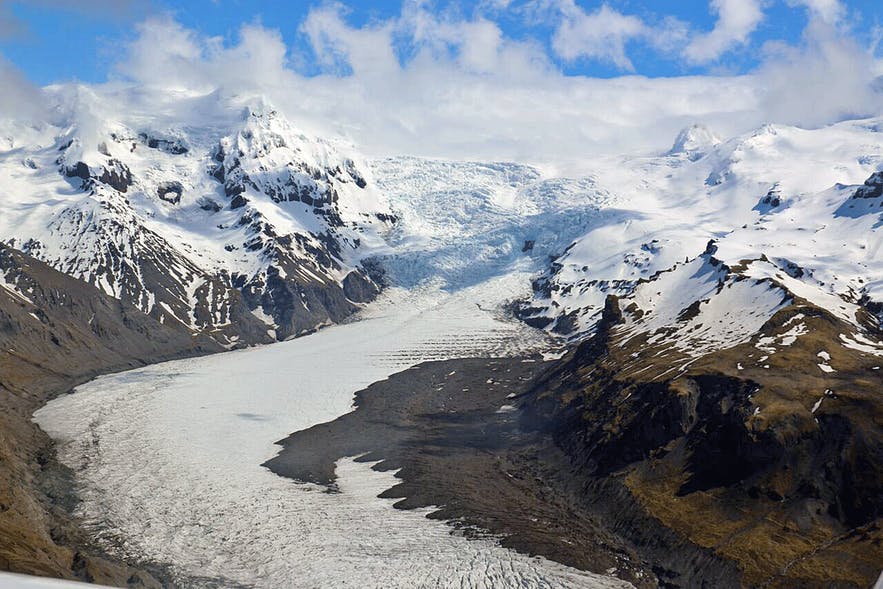Skaftafell National Park
Skaftafell National Park
Located just off road 1, Skaftafell was established as a national park in 1967 to protect its flora, fauna and spectacular glaciers.
The park became accessible to visitors when the ring road around Iceland was completed in 1974 with the bridging of the river Skeidara.
Since 2008 Skaftafell has been part of Vatnajokull National Park. The national park now covers all of Vatnajokull glacier stretching up to the north-east region of Iceland – an impressive 14,200km2, making it the largest protected area in Europe.
From the beginning, it was decided that the national park should be for hikers only, so no roads have been laid within its boundaries. From the car park at the Visitor Centre walking paths provide access to points of interest.
The south side of Vatnajokull is characterized by majestic mountain ridges, with outlet glaciers weaving their way to the lowlands below. There are not many places in the world where it is this easy to get close to the face of a glacier.
Vatnajokull and its outlet glaciers formed around 3000 years ago and are therefore not remnants of the last cold phase of the Ice Age.
Most of the glaciers are retreating and thinning significantly though with an average thickness of 600-800m on the summit dome, the ice will still be there for years to come!
The Visitor Centre at Skaftafell has toilets and a café and you can pick up a map of the walking trails.
Recommended is a hike to Svartifoss waterfall (1-hour return) - a very busy path, but you can strike out further to one of the numerous viewpoints over the area where you will often find fewer walkers.
A visit to the restored turf farmhouse Sel can be incorporated into the walks and is well worth seeing – and it’s free of charge.
Another popular and easy walk on the flat is to the snout of Skaftafellsjokull glacier (about 1.5 hours return in a circular route) – this is a geology trail and you can pick up a leaflet on it at the Visitor Centre.
These walks let you appreciate the forests of birch and willow, and flowers and shrubs including bilberry, heather, saxifrages, harebell, wood cranesbill and grass of Parnassus. Redwing, snipe, when, and ptarmigan are readily observed in the woodlands.
Don’t try and get close to the glacier as the area around it is very unstable and could be dangerous.
If you listen carefully you may hear the glacier creak and crack as it slowly advances. If you want the excitement of a glacier walk, guided excursions can be arranged at Skaftafell with all equipment provided – do it the safe way!


